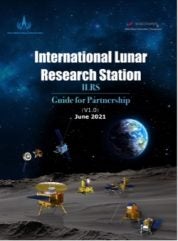
India has expressed strong interest in participating in Russia’s ambitious lunar NPP project, according to multiple Indian news sources. The initiative forms part of a wider effort to establish a lunar base in partnership with China.
Speaking at the recent Eastern Economic Forum held in Vladivostok, Rosatom Director General Alexey Likhachev stressed the importance of international collaboration. “The new solution that we are asked to implement is the option of a lunar nuclear power plant with an energy capacity of up to half a megawatt,” he said. “By the way, with the involvement of the international community, our Chinese and Indian partners are very interested in this. We are trying to lay the foundation for several international space projects.”
Russia’s space agency, Roscosmos, announced earlier this year that work on the lunar NPP was already underway, with plans to deploy it on the moon by 2036. The reactor would provide the energy needed to sustain the long-term lunar base, which Russia and China are currently developing as part of their broader lunar exploration efforts.
Russia has indicated that NPP construction will mainly be carried out remotely, minimising the need for direct human involvement in the plant’s assembly and operation. The NPP is integrated into the broader framework of the International Lunar Research Station (ILRS), a joint lunar base project between Russia and China, first announced in 2021. The ILRS is projected to be operational between 2035 and 2045 and aims to serve as a major hub for scientific research on the moon.
The International Lunar Research Station Guide for Partnership published jointly by the China National Space Administration (CNSA) and Russia’s Roscosmos in June 2021 says in its Preface: “The most efficient and productive investigation, exploration and use of the Moon can be achieved only in a broad international partnership with an attraction of other countries.”
It continues: “CNSA and Roscosmos provide series of cooperative opportunities for all interested international partners in the phases of the plan, demonstration, design, development, implementation, operation and scientific research of ILRS project. China and Russia welcome international partners to participate in all above phases and all-hierarchy levels of each phase. The definition, scientific areas, cooperation domain, and collaborative opportunities of ILRS were discussed and approved by China and Russia Joint Working Group (JWG) and are described in this Guide, which is used to facilitate the partners to find the applicable areas and missions to participate in.”
India has set a goal to establish its own lunar base by 2050 and its participation in Russia’s lunar NPP project could expedite this timeline. If successful, India’s involvement in the Russian-Chinese lunar base project could enhance its position in the global space community, while advancing its space exploration goals.
Indian Space Research Organisation (ISRO) Chairman Sreedhara Panicker Somanath in November 2023 presented a provisional roadmap for Moon exploration during a symposium organised by the Indian Society of Geomatics and the Indian Society of Remote Sensing. This builds on India’s recent lunar successes and ambitions to send astronauts to the Moon by 2040, as urged by Prime Minister Narendra Modi. In 2023, India became the fifth country to successfully land a robotic mission on the Moon.
The ILRS Guide says: “All Partners are encouraged to join ILRS project based on their own situation. Any Partner willing to contribute to the ILRS, through a jointly coordinated negotiation with China and Russia can participate including co-lead status in any part of the project.”






